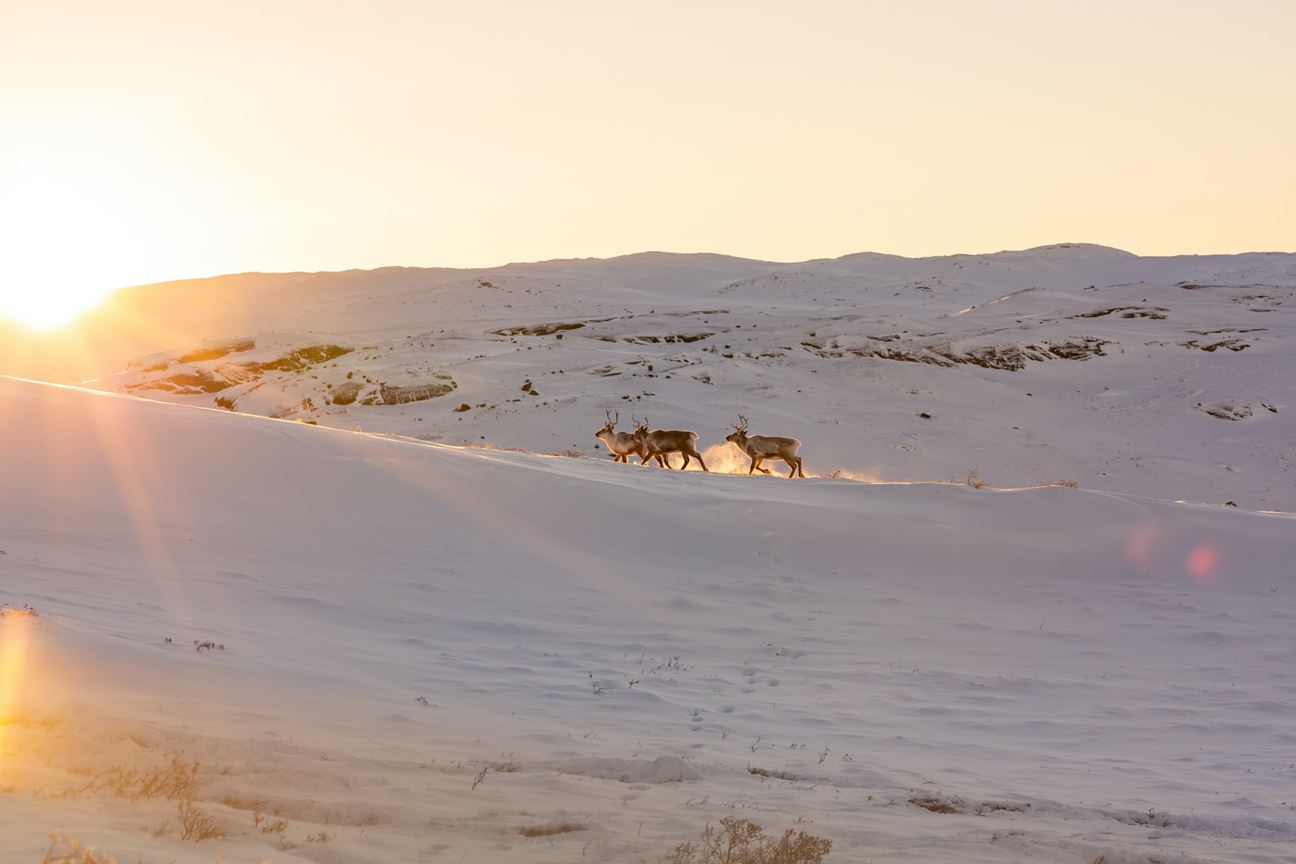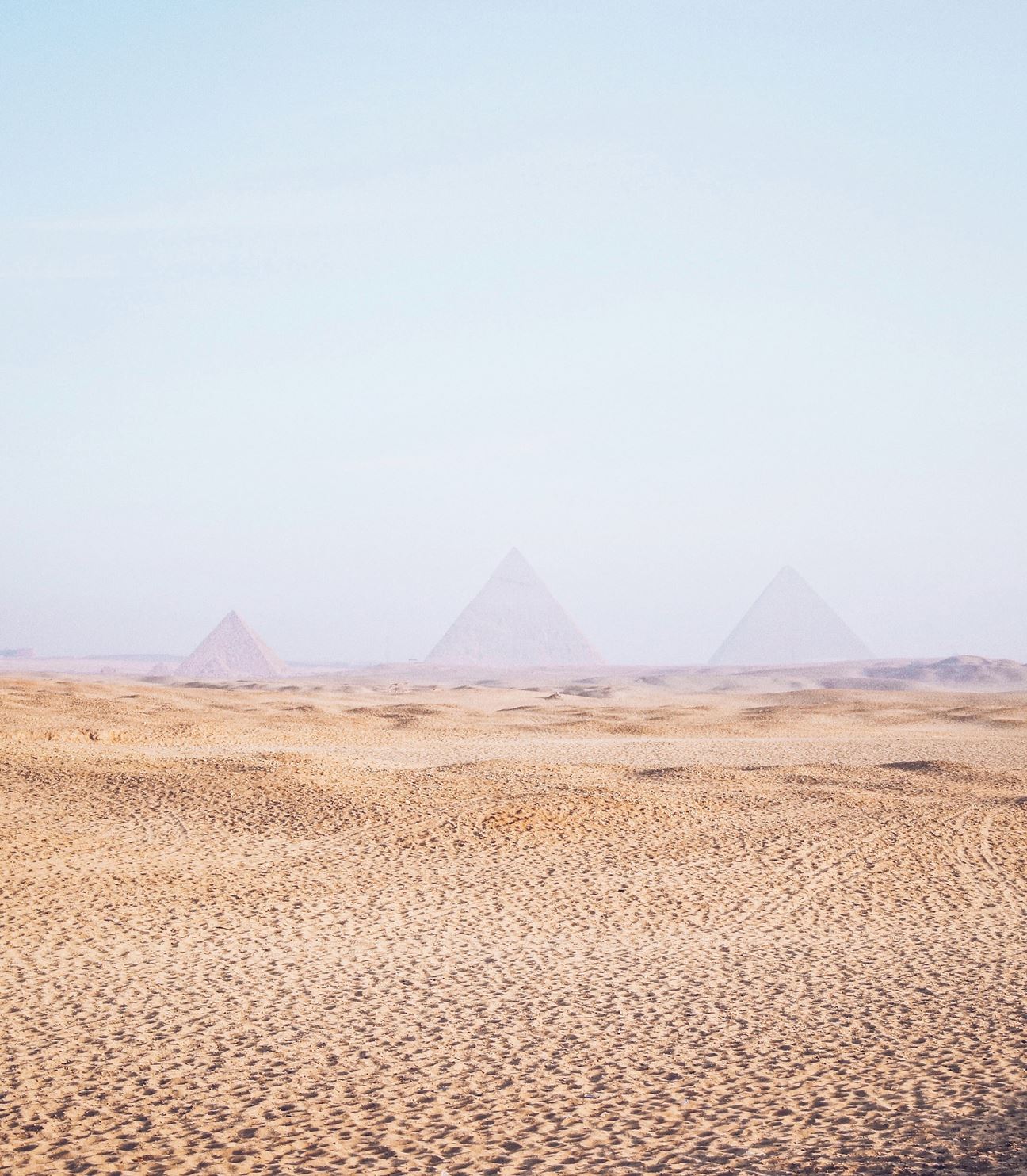See how the living and the non-living come together to create one of earth's most vital biomes. It is stiff and dry and covers almost 20% of the Earth's surface!
Desert, one of the Earth’s major type of ecosystems, are one of the driest biomes. The word desert means ‘abandoned’ and these regions are literally abandoned by rainfall, with annual precipitation falling below 50 millimetres and even zero in some places. A desert biome showcases strong characteristics—the flat and barren desert is brown and mostly empty of life, trees silently staring at the skies, crypt-quiet silence spread over long distances and an occasional presence of fauna that skitters across its golden sands.

The Formation of Deserts
Over a million years ago, glaciation dominated most of the earth’s surface. Rainy and dry periods followed and the climate constantly submitted to high pressures, thus leading to the formation of deserts. Other factors such as mountain ridges, cold oceanic currents and winds also led to the reshaping of the landscapes and were responsible for the formation of deserts.
Top Ten Deserts of the World
Deserts are one of the major ecosystems of the world and can be found on the continents of North America, South America, Africa, Asia and Australia. These vast barren landmasses receive less than an average of 250 mm annual precipitation and can be categorised as either hot or cold. As per the official definition, any area that has a moisture deficit over the course of one year and is almost non-existent of plants is a desert. That way, deserts make up 1/3rd of the land's surface area, which is surprisingly quite a large amount!

The largest deserts of the world are cold deserts. The Antarctic Desert covers an area of over 5 million square miles at the South Pole and is considered one of the windiest, coldest and driest places on the earth's surface. Towards the North Pole, the Arctic Desert is similarly large. Just under 5 million square miles, this desert practically covers all the tundra regions in Russia, Scandinavia, Greenland, Canada and the United States.

Now coming to the hot deserts, the Sahara Desert in Africa is the largest non-polar desert and the third largest desert in the world. Covering 3.6 million square miles of area, the Sahara is spread over African countries of Algeria, Chad, Egypt, Eritrea, Libya, Mauritania, Mali, Morocco, Niger, Tunisia, Sudan and Western Sahara. The next largest is the Arabian Desert that comprises a land of 899,000 square miles and is spread over the Arabian Peninsula. Countries such as Jordan, Iraq, Kuwait, Qatar, Oman, Saudi Arabia, the United Arab Emirates and Yemen are home to this desert and are especially known for their sand dunes. The fifth-largest desert in the world is the Gobi Desert of China and Mongolia, which covers an area of 87,000 square miles.
The list continues with the sixth-largest and the subtropical Kalahari Desert in southern Africa covering 348,000 square miles, the seventh-largest Patagonian Desert of South America covering 257, 000 square miles, the eighth-largest Great Victoria Desert of Australia covering 250,000 square miles, the ninth-largest Syrian Desert covering 200,1000 square miles, and the tenth-largest Great Basin Desert of the United States covering the area of 190,000 square miles.
Now Coming to the Types of Deserts
Depending on where they are located, their characteristics, and the way they are formed, the deserts of the world can be divided into the following types:
Tropical and Subtropical Deserts
Also called arid deserts, these extreme deserts are characterised by anticyclones, elevated inversions, very dry air, and clear skies. Most of these deserts are located between latitude 15° and 30°. In low-latitude deserts, the cloud cover is fewer than 30 days within a year, and so some of the hottest and driest places on earth can be found here. Annual precipitation is very unreliable and ranges between 0-30 centimetres. Temperatures are high, with extreme daily variations. Annual average daytime temperature ranges from 25 degrees celsius to 35 degrees celsius. This is followed by a rapid drop in temperatures post-sunset.
Fauna in the tropical deserts is usually very distinct. For example, Australian deserts see a variety of reptiles but very few mammals. Herbivorous animals like goats, sheep, camels, donkeys and horses are found in abundance while carnivores desert animal species include different cat species, foxes and hyenas.
Asterales, the daisy flowering plant, which has over 23,000 plant species around the world, is the most commonly found plant in the deserts. These grasses dominate the Australian, African, Middle Eastern and North American deserts. Artemisia and Senecio are also found in most deserts. Most plant families found in the deserts are locally significant and include lily families and cabbage families in the African deserts, carnation families in the Middle East, and casuarina and myrtle families in Australia. Some of these plants show elements of having adapted to the more prominent groups in the regions. Trees and large shrubs are not very prominently found in the deserts, but the acacia, cassia, pinus and Callitris can be found in many regions.
Semi-arid are found dispersed all over the world but are typically seen below 23.5° North. The presence of tall mountain ranges which results in a rain-shadow effect is responsible for formations for the semi-arid deserts. The rainfall is minimum but dew is seen on the plants at nights because of the drop in temperature. Annual precipitation ranges between 4-100 centimetres. Temperatures are not too high, with an average daytime temperature of 25 degrees celsius and an average nighttime temperature of 12 degrees celsius.
Just like in the arid deserts, most animals in the semi-arid deserts are nocturnal and include ants, lizards, snakes, rabbits and kangaroos among many others. Since the semi-arid deserts receive slightly more rainfall than the tropical deserts, the flora here is dominated by plant species like jujube which an edible tall thorny tree and its leaves grow in a zigzag pattern, the brittlebush of the sunflower family which grows into 5-feet tall shrubs and triangle-leaf bursage that grows only 1.5 feet and have triangular leaves that a combination of old and dead growth.
The Atacama Desert of South America and the Namib Desert of Africa are the two examples of coastal deserts. The coastal deserts are usually found on the western edges of the continents, along the coasts. These deserts are formed when cold ocean currents cool the air above the surface of the water so much that the air cannot hold the moisture and releases the rain over the sea. Consequently, land along this coast receives little to no precipitation, ultimately resulting in the formation of deserts. Annually, coastal deserts receive only 15 centimetres of rainfall. The temperatures are not very warm, and the annual average summer temperature ranges between 15 degrees celsius and 25 degrees celsius.
The animal species of the coastal desert display many tactics to survive in the harsh desert conditions, and many remain dormant till the climate is more bearable. Mammals like coyotes and gemsbok can be found in the coastal deserts. Apart from mammals, reptiles like lizards and venomous snakes also call these deserts their home. The desert also sees birds like golden eagles and great horned owls. Similarly, the plants growing here have also adapted themselves. Their thick and fleshy leaves and stems enable them to store as much moisture as possible. Salt bushes, black sage and rice grass are some plant species that grow in coastal deserts.
These cold deserts, located at both poles of the Earth, are very different from the stereotyped hot and dry deserts. Polar deserts are characterised by huge areas of land covered in ice sheets where life thrives mostly underwater. Covering almost 90% of the ice on earth, the polar deserts can be extremely dry—drier than even the Sahara desert. This is because of rainfall or snowfall that can be as low as 50 millimetres.
Given its harsh climate conditions, you will not find a lot of life in polar deserts. Among the ones that live here are seals, polar bears, reindeers, kangaroo rats, penguins, and killer whales. Fish, squid, and other sea creatures are found under the water. Reptile life is almost non-existent, with just a few lizards.
When it comes to plants, there are about 700 species. These include grasses, herbs, hedges, and shrubs. Very few tall trees are found in the polar deserts.
What makes Deserts?
As the moisture-filled warm clouds make way from the coasts to the mountains, they are forced to move upwards. As they rise, the air becomes cooler and results in the release of rain on the windward side of the mountain. The clouds that do manage to reach the other side (leeward side) have very little moisture left in them. Mountains experiencing the rain-shadow effect have lush vegetation on one side, and dry desert on the other side. The Gobi Desert of Asia is a perfect example of the rain-shadow effect, where the mighty Himalayas prevent the rain from reaching Gobi.
The Hadley Cell is a cyclic atmospheric phenomenon where the air that rises near the equator moves towards the poles. Here the air cools due to lesser radiation. By the time it reaches the sub-tropics, the air now returns to the surface of the earth and is eventually pushed towards the equator again. The warm conditions at the equator result in the vaporisation of the moisture in the clouds resulting in even drier air—a perfect condition for the formation of deserts.
These areas are so far away from the water bodies that by the time the clouds reach them, there is practically no moisture left in them resulting in little to no rain.
Sunlight Hours in the Deserts
Due to the low cloud cover, deserts receive large amounts of radiation, especially the ones situated closer to the equator. Those situated away from the equator have similar seasonality but receive lower amounts of sunlight. While those situated at the poles face the extreme climatic conditions where summers see constant light, and winters are dark and long.
Human Life in Deserts

Despite its extreme climate conditions, deserts are home to many civilisations as it is not very difficult for humans to survive in the deserts. And humans can adapt well to a range of diverse biomes. Desert people like the Australian Aborigines, American Indians, Bedouins and Mongol herdsmen have adapted well and even show physical attributes that help them live in deserts. Human beings are homo-thermic and are capable of maintaining relatively similar internal body temperature, despite the varying climatic conditions on the outside.
But the effects of the desert environment cannot be down-played. They include extreme amounts of perspiration, physical and emotional fatigue, and dehydration. To beat the heat, humans take shelter in houses that have reflective outer surfaces, shades, controlled insulation, and some vegetation. Their clothing also provides a great deal of protection from the heat and can include headgear, absorbent and insulating garments, and footwear with good sole insulation. And of course, modern technologies like air conditioning, mechanical refrigeration, and heat pump systems make lives a bit easier in the deserts.